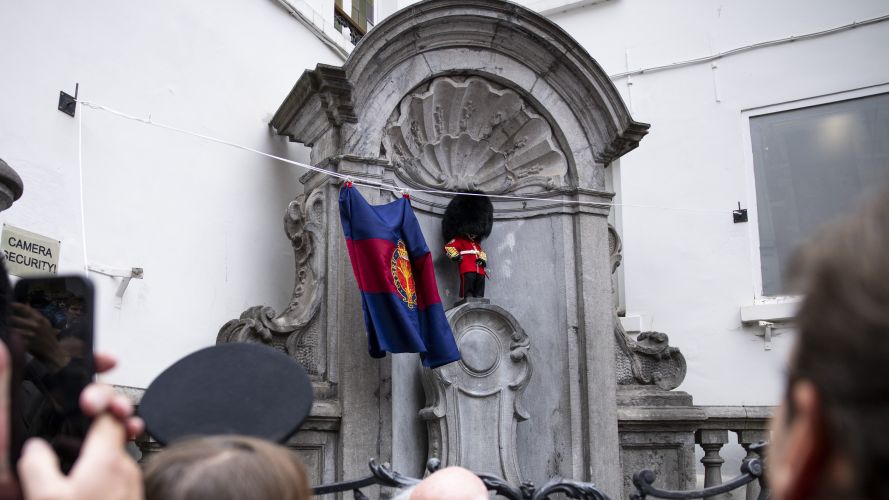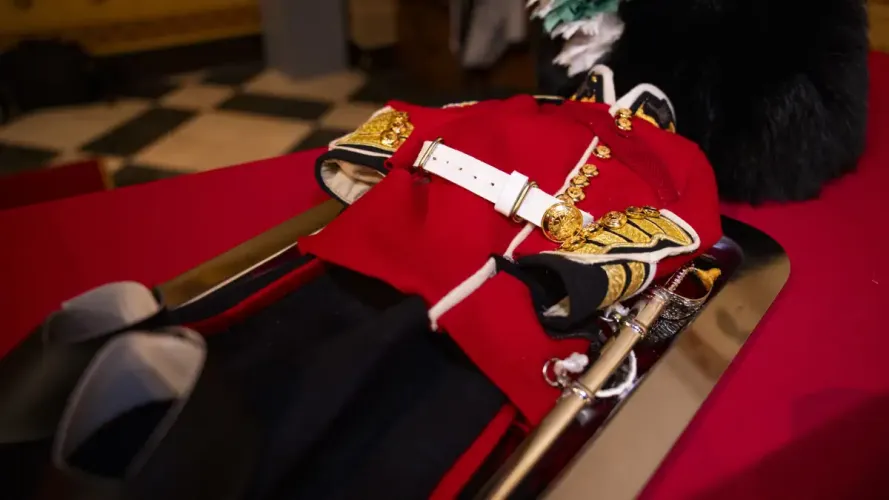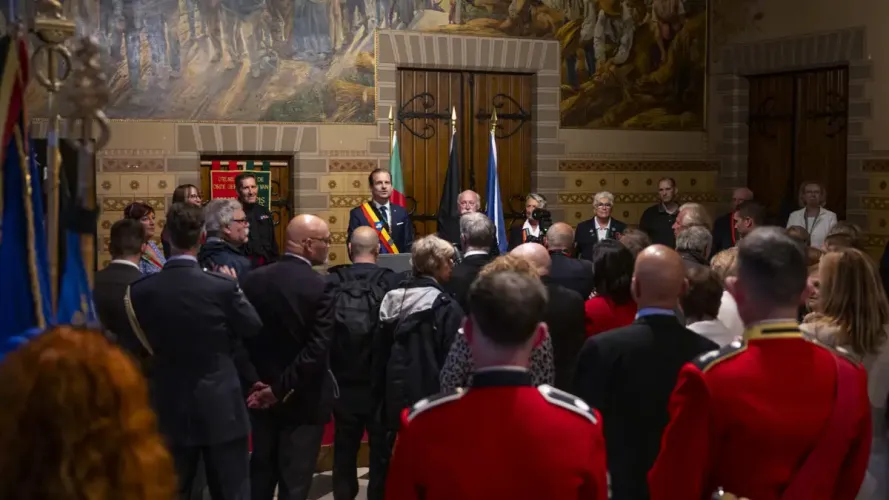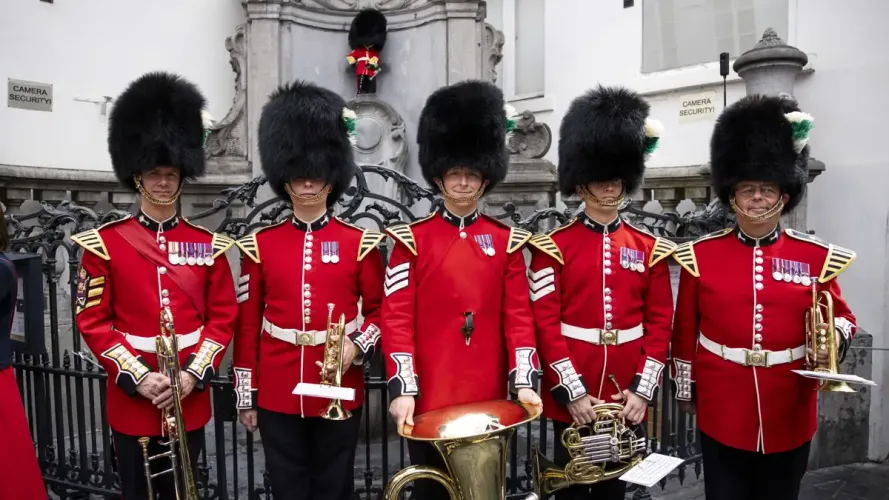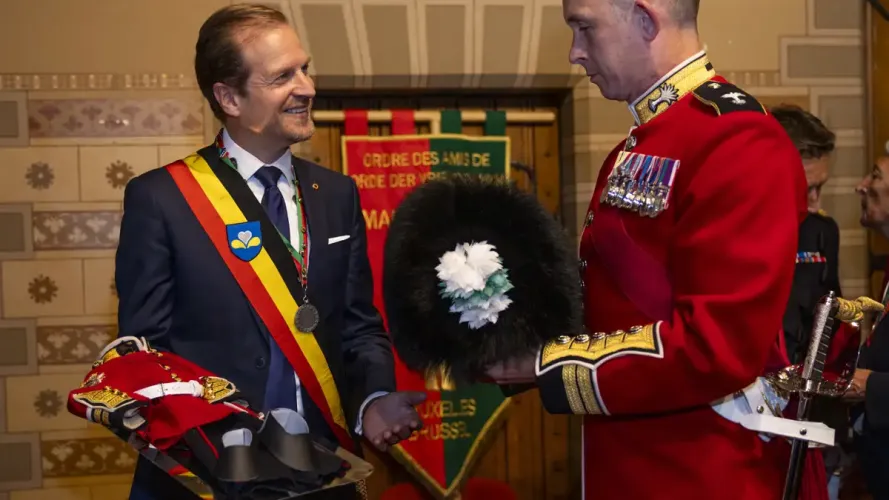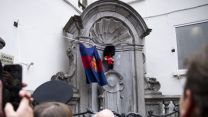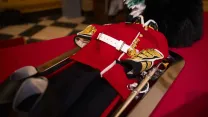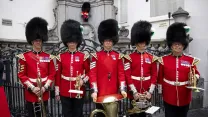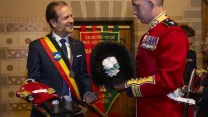Welsh Guards present quirky mini uniform for Brussels' Manneken Pis on Liberation Day
To mark 81 years since the Welsh Guards liberated Brussels from Nazi occupation, a new meticulously handmade uniform has been given to Brussels to be worn by the iconic Manneken Pis fountain statue on Liberation Day every year.
The Manneken Pis – Dutch for "Little Pissing Man" – was first dressed in a Welsh Guards uniform on 29 July 1945 when the 1st and 2nd Battalion Welsh Guards marched from Brussels' Royal Gardens to honour their liberation of the city the year before on 3 September 1944.
The gesture was a symbol of the bravery and sacrifice of the troops who had crossed the Channel to liberate the Belgians and the freedom fighters who supported them.
The original Second World War uniform has been retired to the Manneken Pis Museum as, 80 years since it was first created, it is now too fragile to be used during the annual Liberation Day celebrations.
The Belgians have remained one of the UK's staunchest allies and economic partners for centuries, and the tiny uniform presentation further strengthens the enduring UK-Belgium military partnership and Nato alliance bonds.
Further proof of the UK's strong bond with the country is that Belgium is the only non-Commonwealth country permitted to commemorate its war dead at the Cenotaph in London each year.

What's the gen on the mini uniform?
Every piece of the new uniform has been painstakingly handmade by First Battalion Welsh Guards tailors, with no detail overlooked.
The buttons are in rows of five to denote the brigade order of the Welsh Guards, the miniature bearskin cap's kerb chain is made from the links from an officer's spur and the cap has a mini green and white plume – the colours of Welsh patron saint St David's flag.
It has a brilliant white belt with a belt buckle inscribed with the symbol of a leek, just like all the Welsh Guards soldiers.
The uniform project has been the brainchild of British Army Master Tailor Sergeant Chris Watson and represents the skilled craftsmanship tradition behind all British Army ceremonial uniforms.
Many items have been apprenticeship pieces, assessed to the highest standards of tailoring.
Dressing a statue is considerably more difficult than dressing a living Guardsman and the soldiers had to borrow a plaster copy of the Manneken Pis from the museum in Brussels to ensure a perfect fit.
Only the miniature sword was sourced externally, crafted by specialist military suppliers Pooley and Sons as an exact replica of a Warrant Officer's sword.
Only Regimental Sergeant Majors in the Guards are allowed to wear swords and they are only ever drawn during the ceremony of the King's Birthday Parade, so this is a very special item that symbolises loyalty and unwavering willingness to protect.
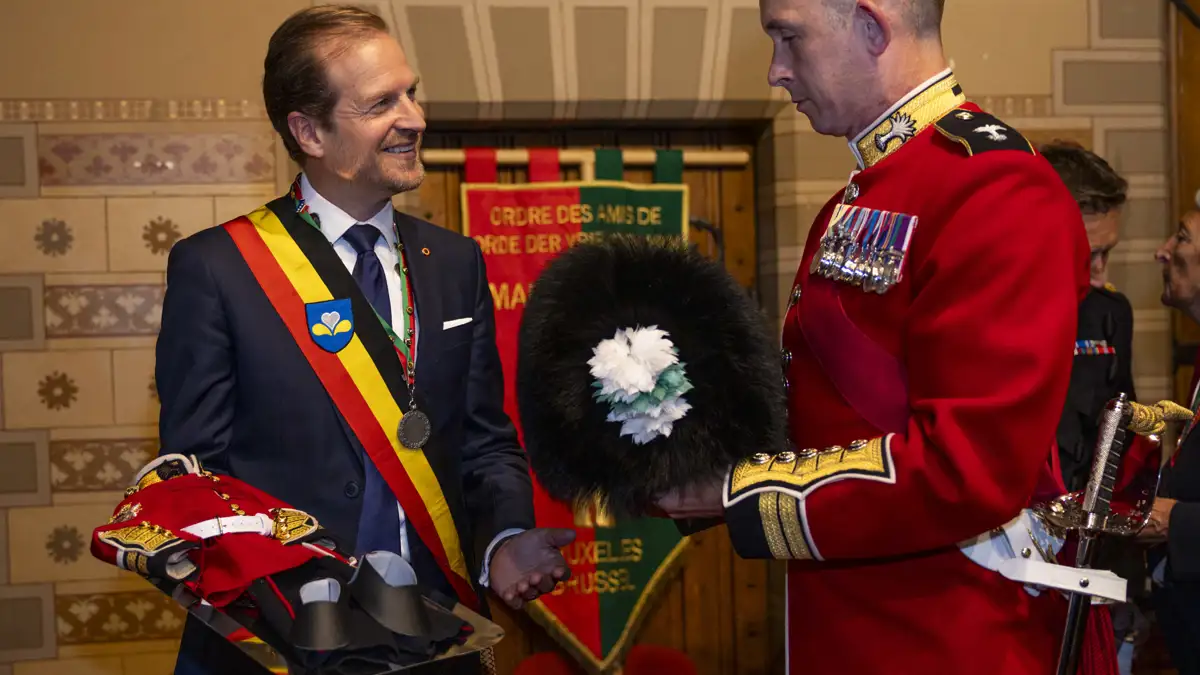
History in the making
Regimental Sergeant Major WO1 Greaves had the honour of recreating the historic moment when, in 1945, the iconic Manneken Pis statue was dressed in the original, tiny Welsh Guards uniform.
He said: "To be able to present this new Welsh Guards uniform to the City of Brussels is a great honour for me and the regiment, particularly following my predecessor, 80 years on.
"It further reinforces the strong relationship between the City of Brussels and my regiment."
Eluned Morgan, The First Minister of Wales, said: "The Welsh Guards have a long and proud battle history and their historic role in the liberation of Brussels is something all of Wales should be proud of.
"Their courage and sacrifice helped towards the liberation of Europe and laid the foundations for peace and the end of the Second World War."
